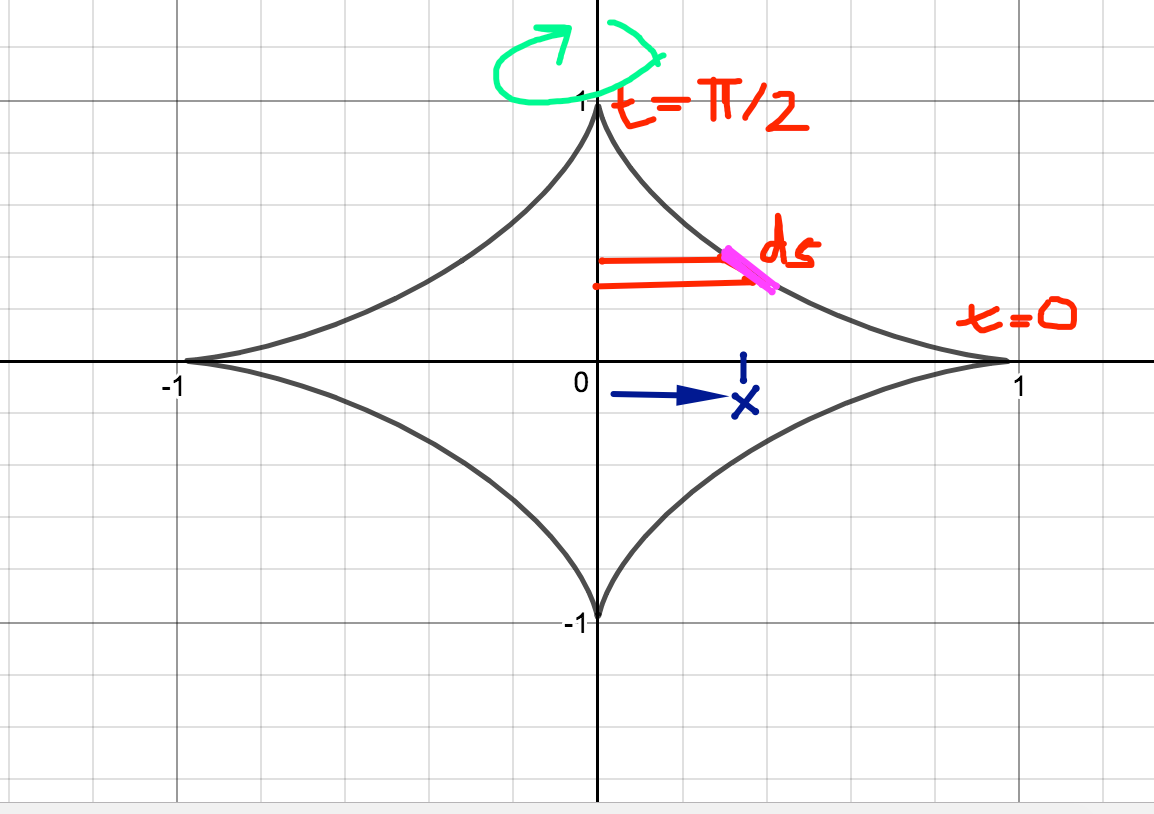How do you find the area of the surface generated by rotating the curve about the y-axis #x^(2/3)+y^(2/3)=1# for the first quadrant?
1 Answer
Apr 23, 2018
Explanation:

We can param this:
Let
Then arc lenth along the curve in Q1 is:
The surface area of the revolution around the y-axis is:
And:

